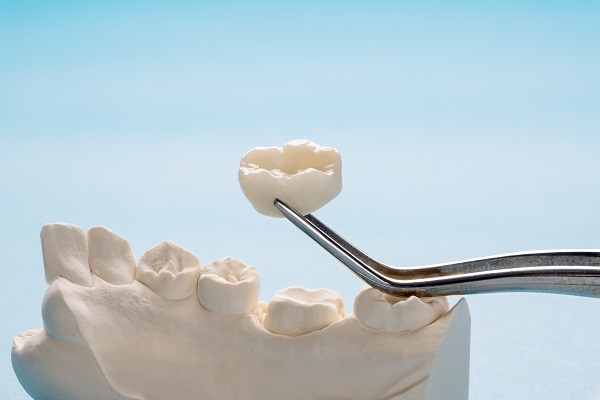Does a Dental Crown Protect Your Tooth?

A dental crown is a restoration that completely covers a tooth above the gumline. It is often used to protect or restore a damaged or decayed tooth. A crown can also help to address a variety of other issues. Read on to find out more about how a dental crown can protect your tooth.
Dental crown
Dental crowns can be made from all-ceramic, all resin, metal, or porcelain fused to metal. Each type of dental crown has its benefits. Resin and porcelain crowns are very popular because they can be made to look almost identical to natural teeth. All-metal crowns are very strong and durable.
This makes them a great choice for molars. One of the main benefits of dental crowns is that they can protect teeth. Crowns can protect teeth that are broken or have extensive decay. Sometimes, crowns can also be used to protect teeth that have been restored by root canal treatment.
Repairing a decayed or broken tooth
Teeth chip or break because of a variety of issues, including a blow to the face, falling, or biting down on something hard. If a large piece of a person’s tooth breaks off or a tooth has extensive decay, the dentist may recommend a dental crown. In such cases, the dentist will first grind or file away part of the remaining tooth. The dentist will then cover it with a dental crown to protect it and improve its look. A dental provider usually drills away all the decayed area and enough of the remaining tooth to ensure a good fit.
A crown can also be used to hold together parts of a cracked tooth to prevent it from breaking completely, which also protects it from further damage. Root canal treatment is often used to repair and save an infected or severely decayed tooth. A tooth that needs root canal treatment usually has extensive decay, a large filling, or other problems. In many cases, a crown or other dental restoration is placed on the restored tooth to protect it. It can also help prevent the tooth from breaking.
Dental crown procedure
The dental crown procedure can be completed in just two dental visits. The first visit usually involves the examination and preparation of the tooth. Preparing the tooth usually involves removing a layer of the outer surface of the tooth. The dentist will then make an impression of the tooth using a paste. Impressions of the teeth above the crown will also be made. This is vital to ensure the dental restoration will not affect the patient’s bite.
The impressions will be sent to a dental lab, where the dental crown will be made. The second visit usually entails the placement of the permanent custom-made crown. During the second visit, the dental provider will remove the temporary crown and check the shape, color, and fit of the permanent crown. The dentist will then permanently cement the new crown in place.
Visit your dentist
A dentist might recommend a crown for a variety of reasons, including protecting a tooth. Dentists usually use crowns to protect teeth that are weak or have broken. They can also restore the appearance of broken or decayed teeth. To find out more about dental crowns, talk to your dentist today.
Are you considering getting a dental crown in the Santa Barbara area? Get more information at https://www.hemingwaydds.com.
Check out what others are saying about our dental services on Yelp: Dental Crowns and Dental Bridges in Santa Barbara, CA.
Related Posts
A person’s smile is one of the first things that they show off to the world, and a dental crown is one way to bolster that smile and restore teeth that may have sustained damage or blemishes. Dental crowns look similar to natural teeth, so no one will be able to tell at a glance…
A traditional dental bridge can replace up to three or four consecutive teeth on the same side of a dental arch. It is one of the most common dental replacements you can get. Knowing how to care for it can help maintain your new smile for a long time. Here are some tips for ensuring…
Considering a dental bridge to replace your missing teeth? If you have one or more missing teeth, then you have several options available to you to replace the missing teeth and regain confidence in your smile. A dental bridge (of which there are several types) is a great way to restore your smile, and there…
If you have a cracked, discolored, or chipped tooth, dental bonding can be a good option. This is a cosmetic dental procedure and can encourage you to smile more. In the procedure, your dentist will apply resin to your teeth that is the same color as your teeth. That can repair any damage. It can…
